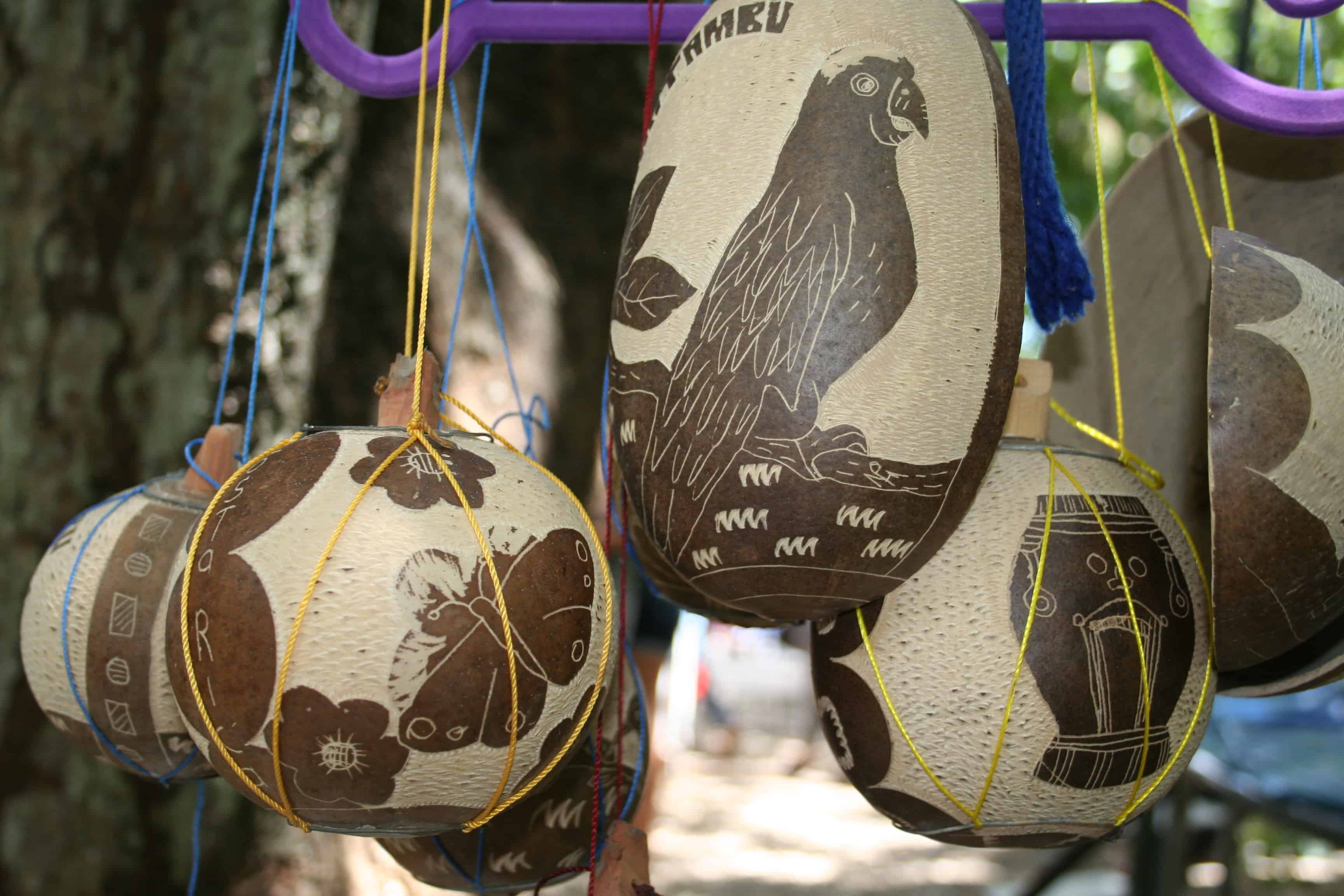This is how Leonardo Androvetto tells the story of how he began making gourds from the jícaro (calabash) tree into art: “My friend said he would teach me if I wanted to learn. I bought tools in San José. I didn’t think I’d like it. But when I start, I like so much.”
That was just three years ago, and now Androvetto, 25, is making a living off of his creations. He lives in San José most of the year, but winters in Playa Sámara, where his uncle also works as an artist.
To build his art, Androvetto first takes the large green balls, which are sometimes oval shaped, from the jícaro tree. With a sharp tool, he makes a sketch. With another tool he gouges out his design. The process takes about two or three hours, depending on the size of the fruit. “Each gouge is very hard on the hands, need to be so quiet, need to concentrate on the work,” he says.
His hand is a tapestry of scars, evidence of how the tool sometimes slips. He makes designs on just half of the fruit, and he cuts them apart only when he has finished chiseling the designs.
The innards have an odd chemical smell, but not a bad taste. The fruit is filled with a green gel that needs to be scraped out, which can be difficult. Androvetto invented a process for soaking the fruit in water to simplify the scraping, and he also created special tools to aid in the process. Once scraped and cleaned, the outer shell dries, becoming hard and resilient.
Besides the artistic value of the pieces, they are also used to make canteens, bowls, cups and lamps. The tradition comes from the Chorotega Indians, who lived in Guanacaste hundreds of years ago, Androvetto explains.
Androvetto’s mentor, Xavier, taught him the trade, but “we have different kinds of styles,” Androvetto says. “My style is often more traditional, like masks or faces, like pre-Columbian art, the art that comes from the Indians.” Indeed, his style is often called primitive.
Making the art supports Androvetto during tourist season, he says, and other members of his family live the same way. His mother makes ceramics, and his aunt works in several mediums. His uncle, Indio, whom he spends winters with in Sámara, carves pendants from coral and bone, often in the shape of traditional Indian faces. “In the past, I never knew I have the art in my blood,” Androvetto says.
He and his uncle Indio sell art on the beach and in restaurants in Sámara for $10-$30 a piece, but those interested may order it at joseandrovetto@hotmail.com. The work is in high demand and goes fast.
Androvetto is grateful for that, and for the new friends he has made through art: “The jícaro gave me the opportunity to meet people from other countries, Germany, Switzerland, U.S., Italy, too.”
By Elisabeth Janos | Special to The Tico Times






